Complete Solutions to Exercise of chapter PART TEST 5 of Class 11 book with complete answers and questions
| Class 11 | PHYSICS |
| Chapter | PART TEST 5 |
| RESONANCE | Exercise |
| Number Of Questions | 30 |
| Academic Year | 2023-24 |
Two identical spheres of same mass and specific gravity (which is the ratio of density of a substance and density of water) 2.4 have different charges of Q and -3Q. They are suspended from two strings of same length `l` fixed to points at the same horizontal level, but distance `l` from each other. When the entire set up is transferred inside a liquid of specific gravity 0.8, it is observed that the inclination of each string in equilibrium remains uncharged. The dielectric constant of the liquid is K. Find the value of 4 K
View SolutionTwo uniformly charged concentric spherical shells of radius R and r, are given charges `Q_1` and `Q_2` respectively. If their potential difference is V, then it will not depends upon:
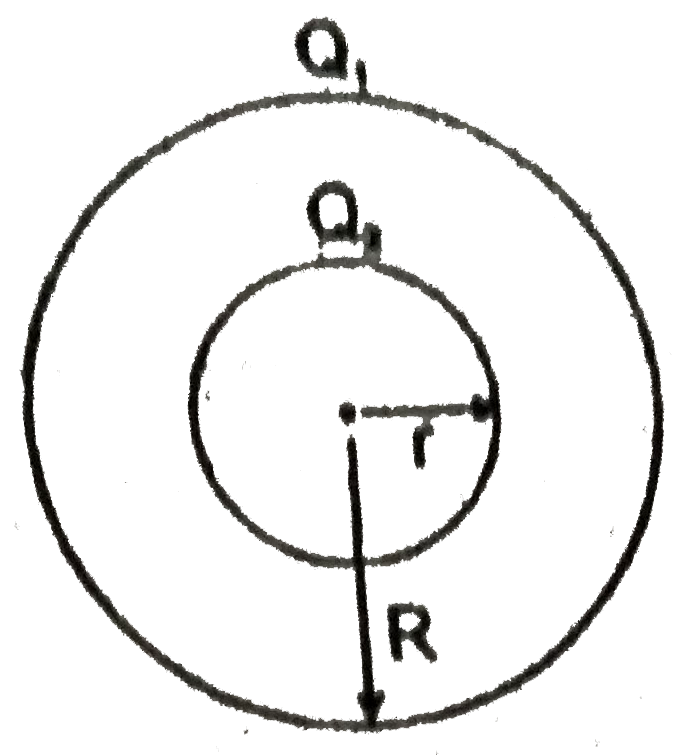
View SolutionFigure shows a solid hemisphere with a charge of 5 nC distributed uniformly through its volume. The hemisphere lies on a plane and point P is located on the plane, along a radial line from the centre of curvature at distance 15 cm. The electric potential at point P due to the hemisphere is:

View SolutionFigure shows two concentric shells of radii a and b uniformly distributed charges q and -q. Which of the following graphs gives correct variation of electric field intensity E with the distance r from the centre?
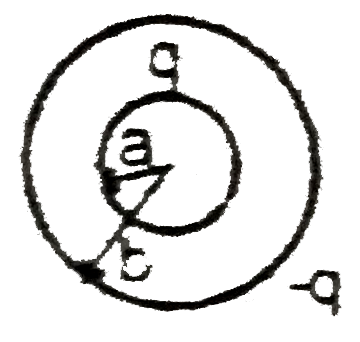
View SolutionTwo particles of charge `q_(1)` and `q_(2)` are separated by distance `d` as shown in figure. Chrage `q_(1)` is situarted at the origin. The net electirc field due to the particles is zero at `x = d//4`. With `V = 0` at infinity, the location of a point in terms of `d` on the `x` axis (other at infinfity) at which the elctrical potential due to the two particles is zero, is given by:

View SolutionA fixed ring of radius R is given a charge q. A charge `q_0` is brought slowly from infinity to the centre of the ring. The wrong statement is-
View SolutionIn the figure two concentric conducting shells of radius R & 2R are shown. The inner shell is charged with Q and the shell is unchanged. The amount of energy dissipated when the shells are connected by a conducting wire is:
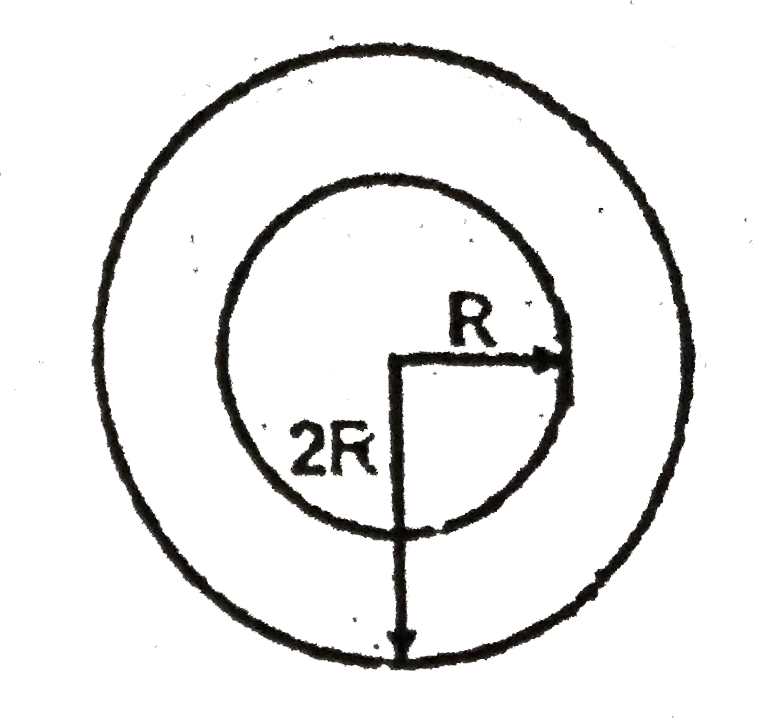
View SolutionTwo equipotential spherical surfaces having potential `20V` and `0V` are as shown in figure. There is no charge anywhere is space except on the surface of both the spheres. Then which of the following figure represents the nature of electric field in region between the spherical surfaces by electric lines of forces.
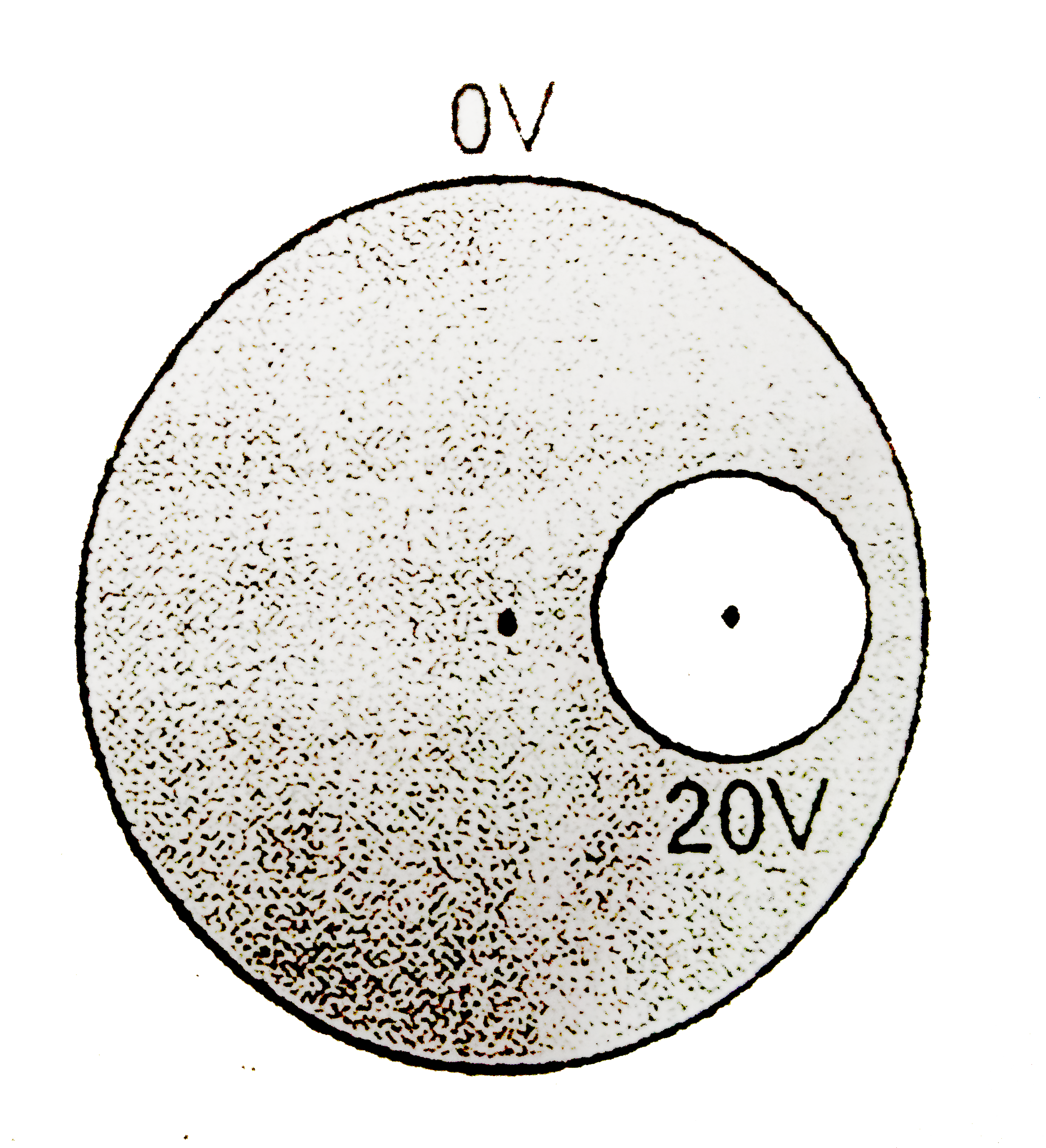
View SolutionThe electric field intensity at all points in space is given by `vecE = sqrt(3)hati - hatj` `V//m`. The nature of equipotential lines is x-y plane is given by
View SolutionTwo concentric conducting thin shells of radius R and 2 R carry charges +Q and +3Q respectively. The magnitude of electric field at a distance x outside and inside from the surface of outer sphere is same. Then the value of x is
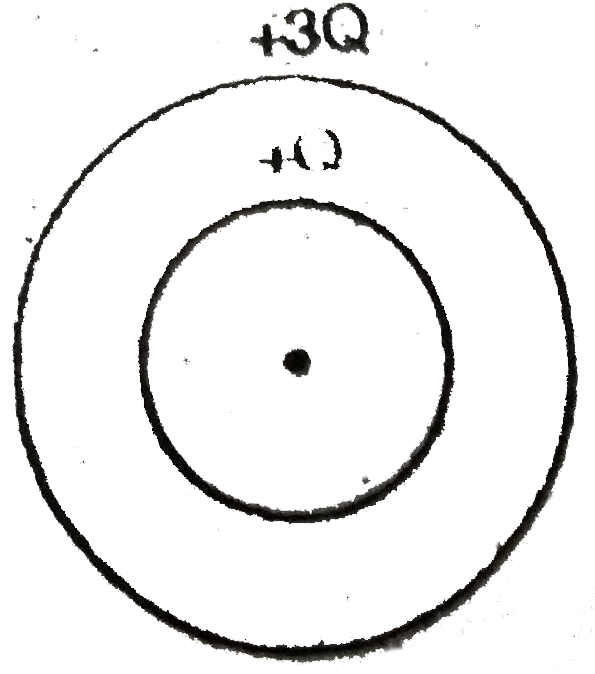
View SolutionA uniformly charged non-conducting spherical shell is given +q charge and a point charge -q is placed as shown. The electric field lines will be

View SolutionFind out the potential of the junction S (in volts) if all the dark wires are of resistacne R and light wires have zero resistance.
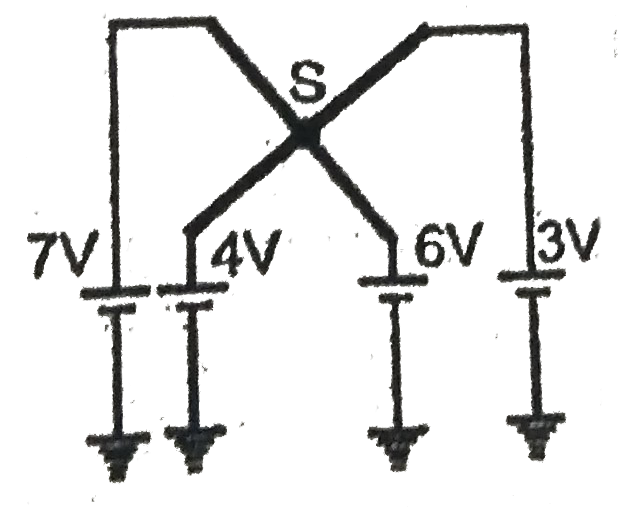
View SolutionIn the figure shown `R = 100 Omega,` `L = (2)/(pi) H` and `C = (8)/(pi) mu F` are connected in series with a.c source of 200 volt and frequency `'f'`. `V_(1)` and `V_(2)` are two hot-wire voltmeters. If the readings of `V_(1)` and `V_(2)` are same then:
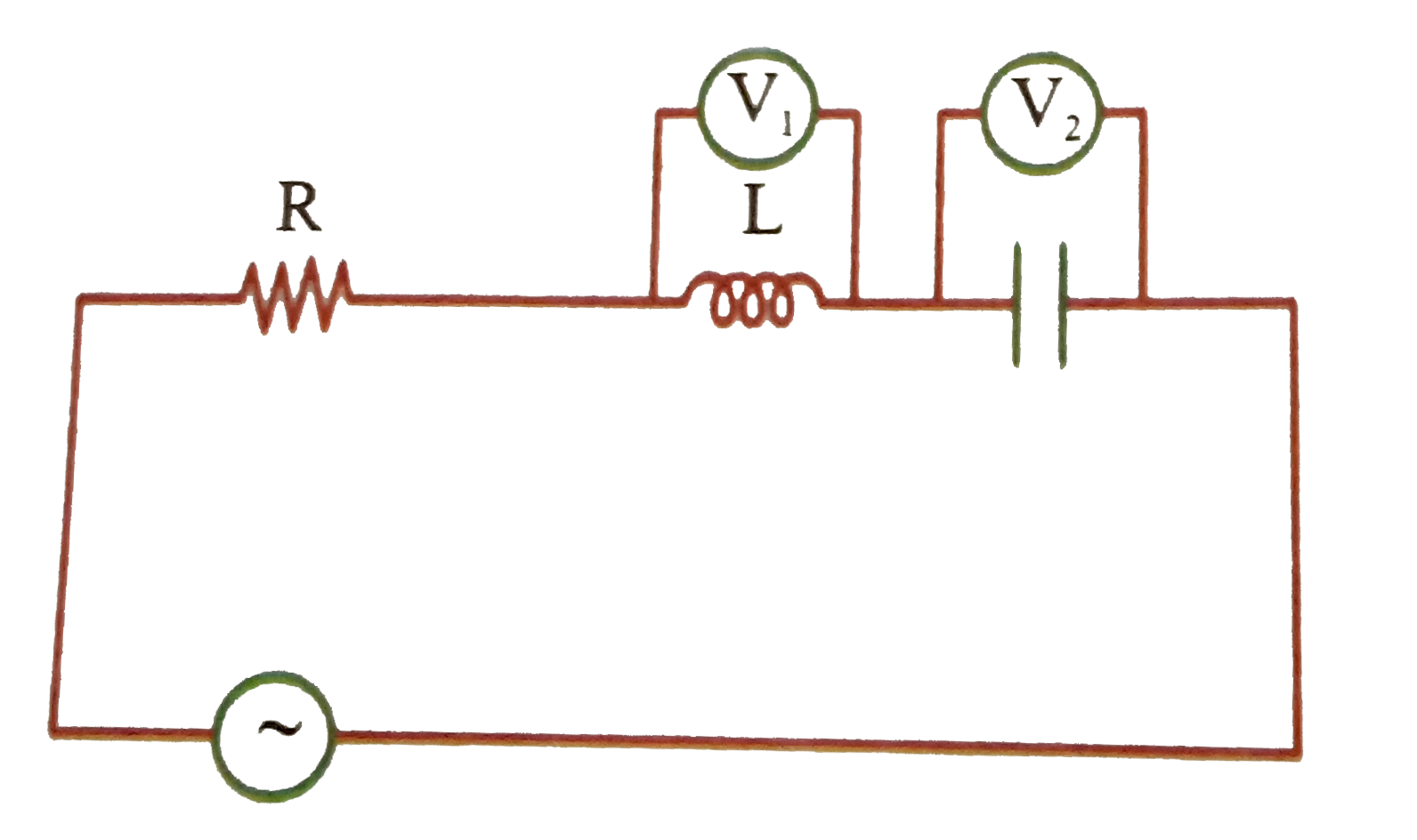
View SolutionA uniform field is exists in the region directed away from the page. A charged particle, moving in the plane of the page follows a anticlockwise spiral of increasing radius as shown. True explanation is:

View SolutionWhen the number of turns in a solenoid are doubled without any change in the length of the solenoid, its self inductance becomes
View SolutionThe potential difference across`8Omega` resistance is 48V as shown in the figure. The value of potential difference across X and Y point will be

View Solution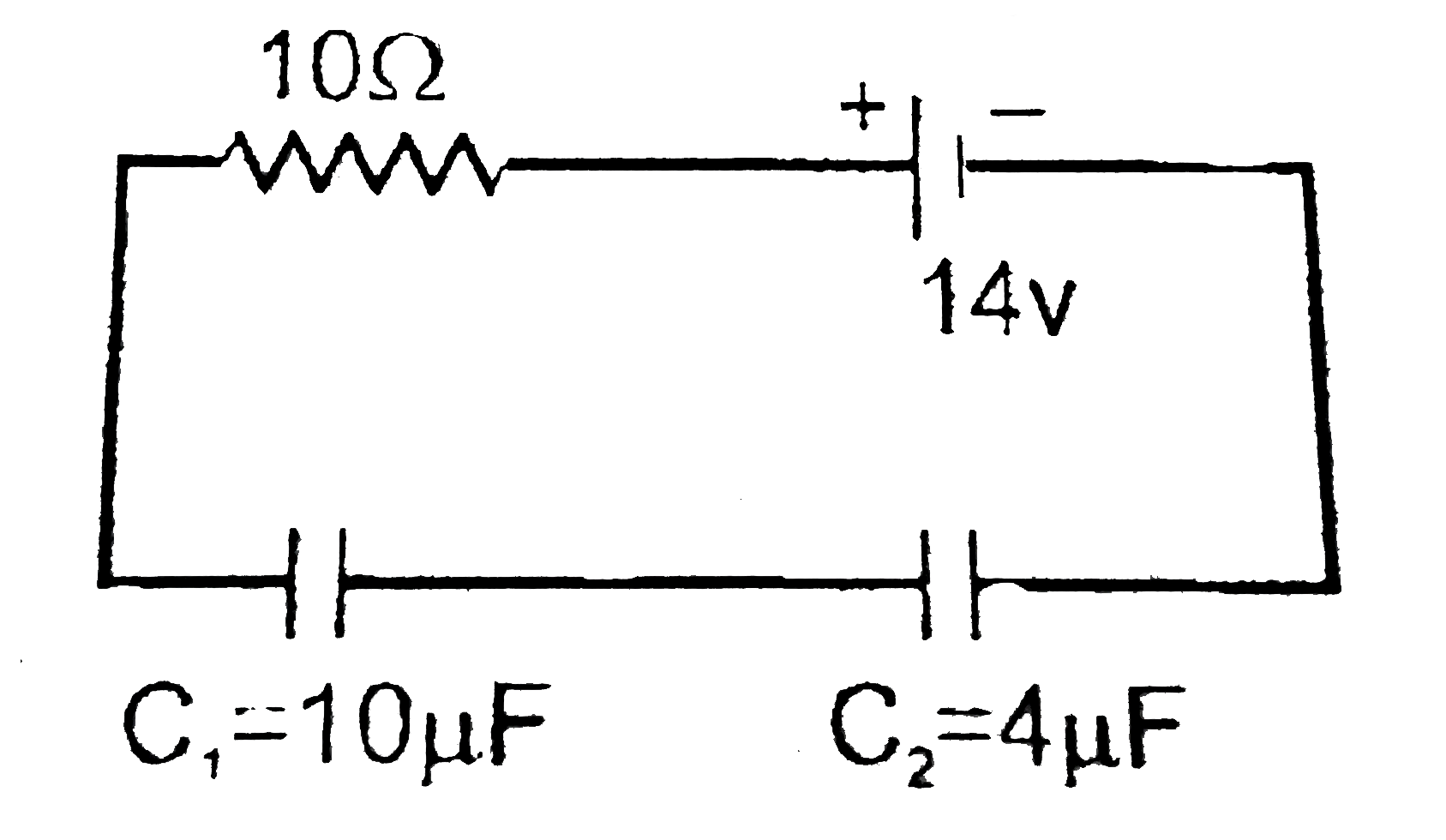
In the given circuit, in steady state we may say: (capacitor are initially uncharged)
View SolutionTwo circular rings of identical radii and resistance of `36 ``Omega`` each are placed in such a way that they cross each other's center `C_(1) and C_(2)` as shown in `Fig. 7.54`. Conducting joints are made at intersection points `A and B` of the rings. An ideal cell of emf `20 V` is connected across `A and B`. Find the power delivered by the cell (in `10^(2) W`).
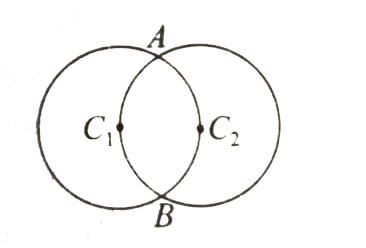
View SolutionAt distance `r` from a point charge the ratio `(U)/(V^(2))` where `U` is energy density and V is potential) is best reprsented by
View SolutionA graph between current and time during charging of a capacitor by a battery in series with a resistor is shown. The graphs are drawn for two circutis. `R_1, R_2, C_1, C_2` and `V_1, V_2` are the values of resistance, capacitance and `EMF` of the cell in the two circuits. If only two parameters (out of resistance, capacitance, `EMF`) are different in the two circuits. What may be the correct options (s) ?
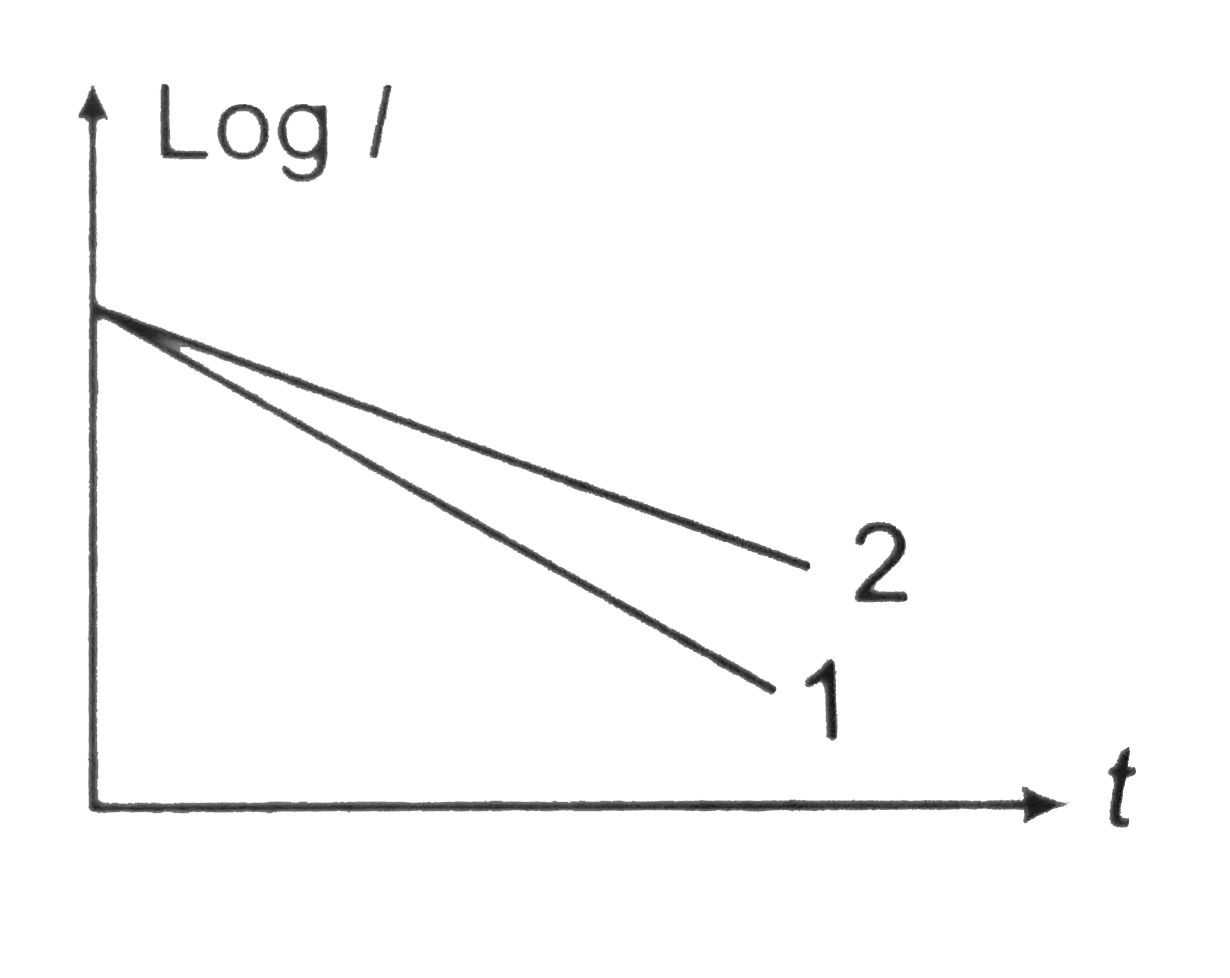
View SolutionAn electron passes between two parallel plate of a capacitor as shown in the diagram. The electron emetrs the plate at t=0 and it comes out of the plates at time t-T, the electron hits the screen at A, as shown. Now a time varying potential difference V is applied between the plates, as shown in the graph. (Neglect the gravity). The point where the electrin now will strike the screen (as compared to point A) will be
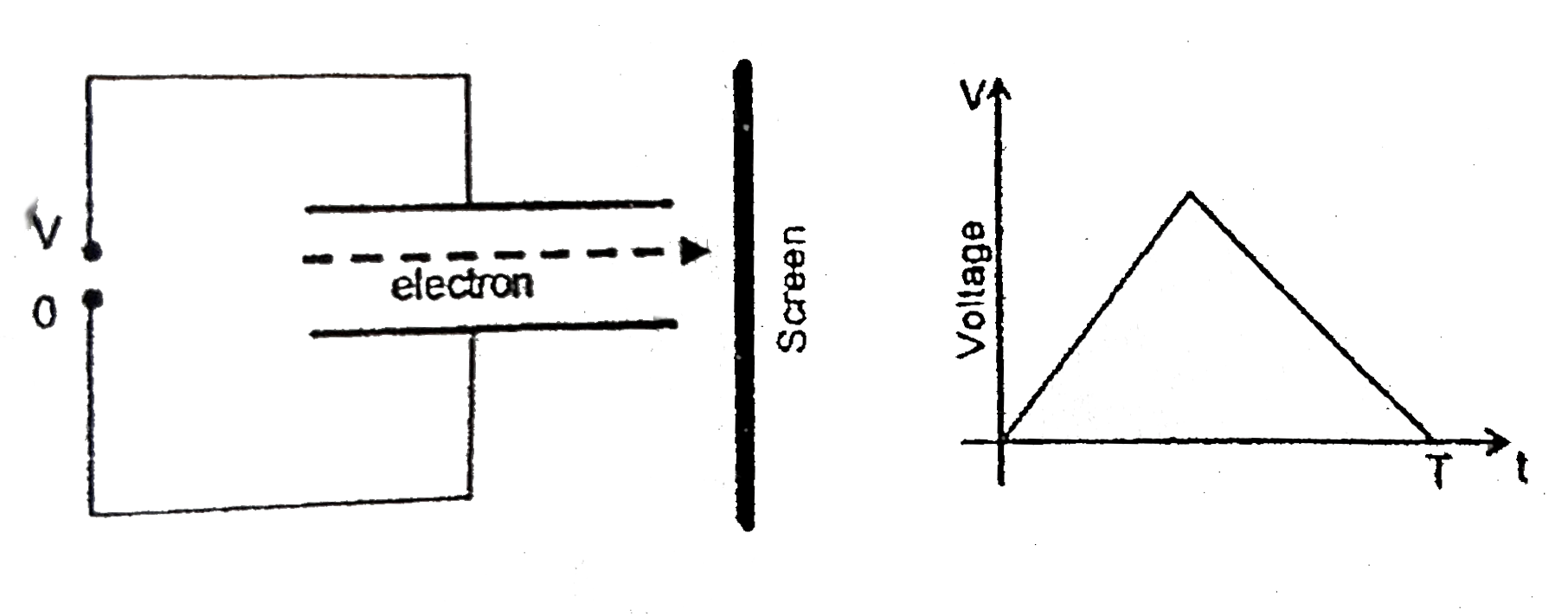
View SolutionThree distinct current carrying wires intersect a finite rectangular plane ABCD. The current in left wire and the loop is `I_1`. The direction of current in left most wire and right most loop is downwards as shown in figure. The current `I_2` through middle wire is adjusted so that the path integral of the total magnetic field along the perimeter of the rectangle is zero, that is, `oint_(ABCDA) vec B. vec (dl) = 0`. Then the current `I_2` is-
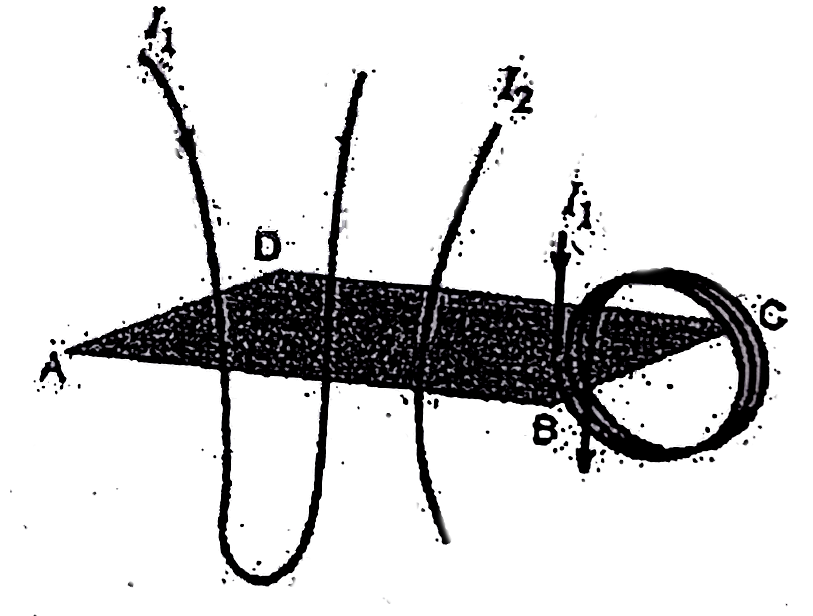
A. `2I_(1)` and upwards
B. `2I_(1)` and downwards
C. `4I_(1)` and upwards
D. `3I_(1)` and downwards
View SolutionAn alternating EMF of frequency `(1)/(2pi sqrt(LC))` is applied to a series LCR circuit. For this frequency of the applied EMF,
View SolutionIn an AC circuit , the power factor
View SolutionThe instantaneous potential difference between points.
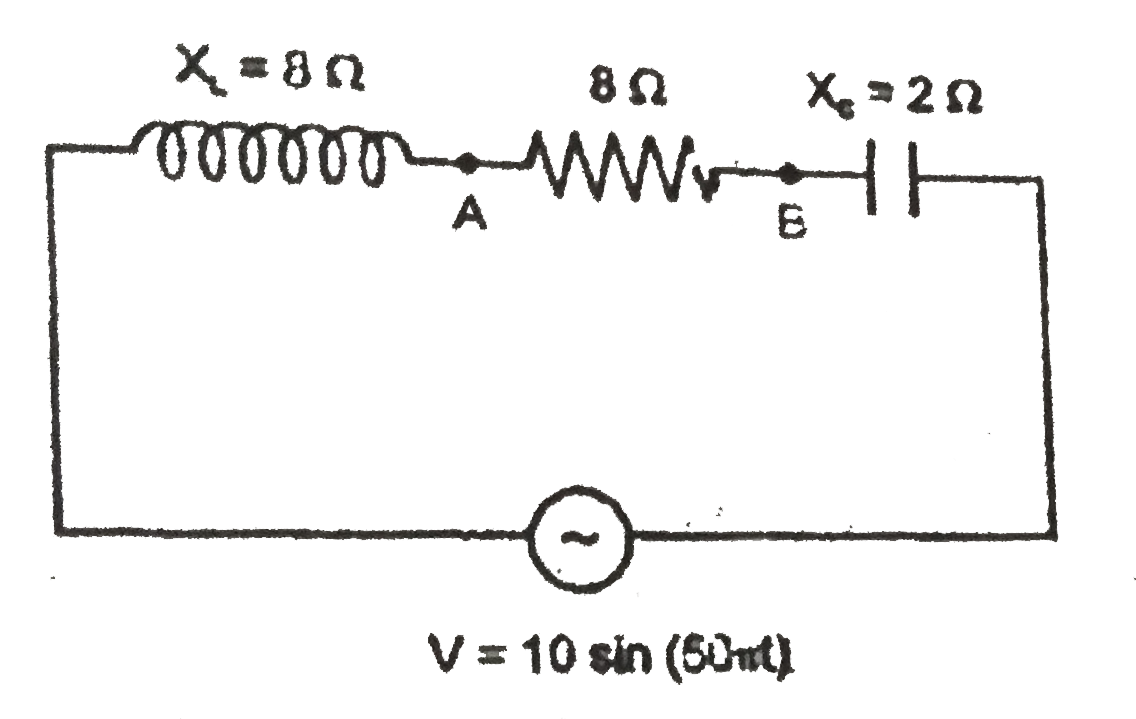
A. `8 sin (50 pi t+37 (pi)/180)`
B. `8 sin(50 pit-37(pi)/180)`
C. `10 sin(50pit)`
D. `10 cos(50 pit)`
View SolutionA parallel plate capacitor is charged and the charging battery is then disconneted. If the plates of the capacitor are moved further apart by means of insulating handles.
View SolutionThe linear charge density on a ring of radius R is `lambda=lambda_0 sin (theta)` where `lambda_0` is a constant and `theta` is angle of radius vector of any point on the ring with x-axis. The electric potential at centre of ring is
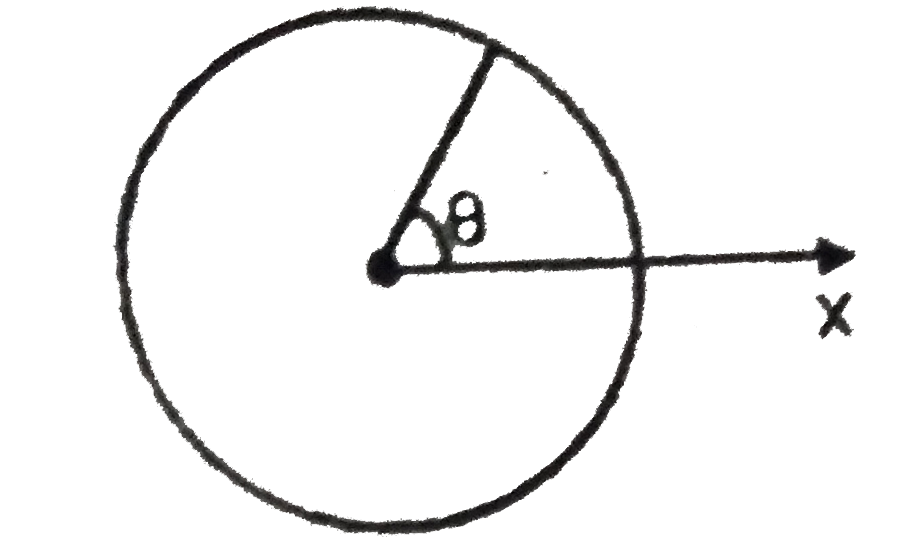
View SolutionTwo small spheres of masses `M_(1)` and `M_(2)` are suspended by weightless insulating threads of lengths `L_(1)` and `L_(2)`. The spheres carry charges `Q_(1)` and `Q_(2)`, respectively. The spheres are suspended such that they are in level with one another and the threads are inclined to the vertical at angle of `theta_(1)` and `theta_(2)` as shown. Which one of the following conditions is essential, if `theta_(1) = theta_(2)`?
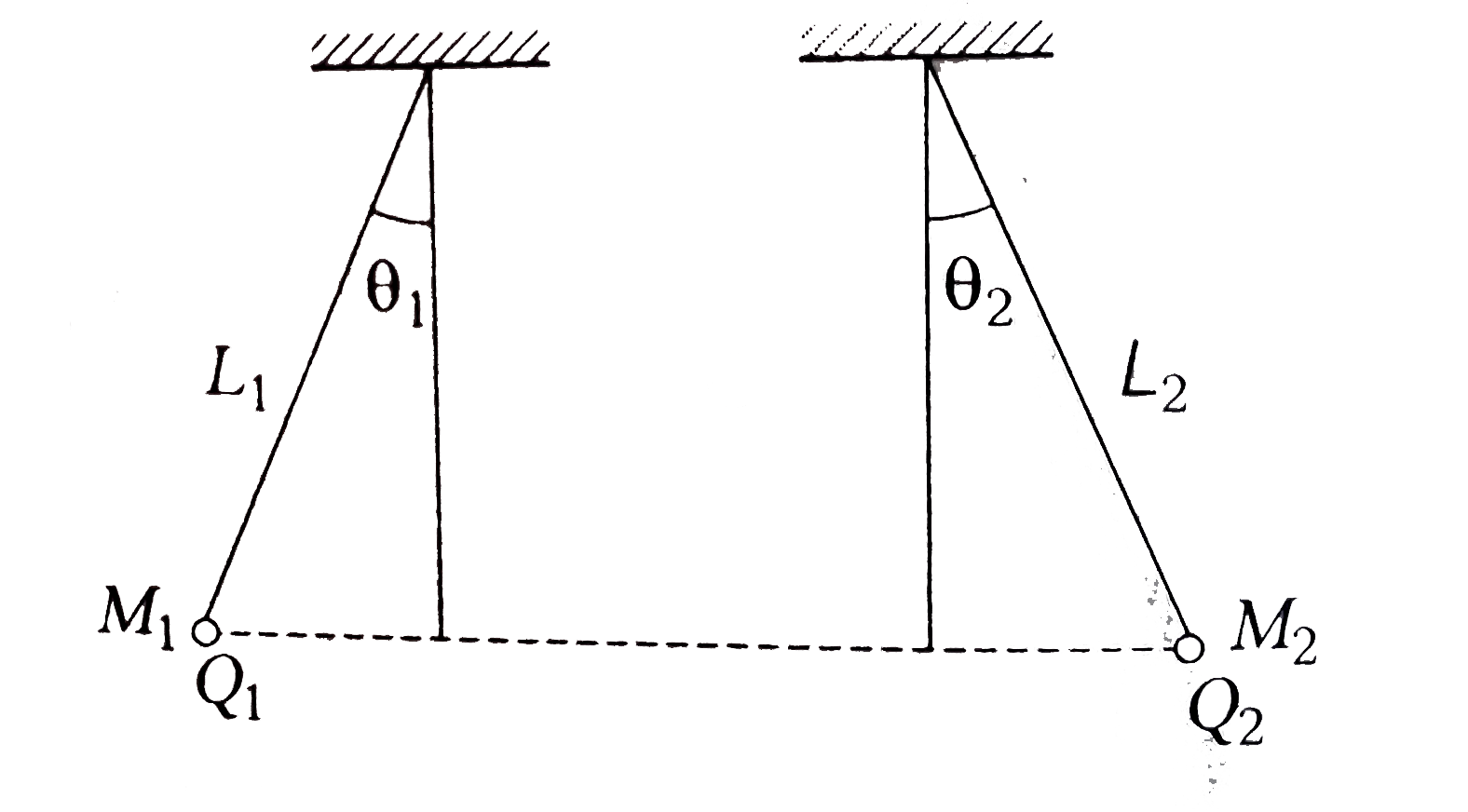
View SolutionAssertion:- A point charge q is placed near an arbitary shaped solid conducot as shown in figure. The potential difference between the points A and B within the conductor remain same irrespective of the magnitude of charge q
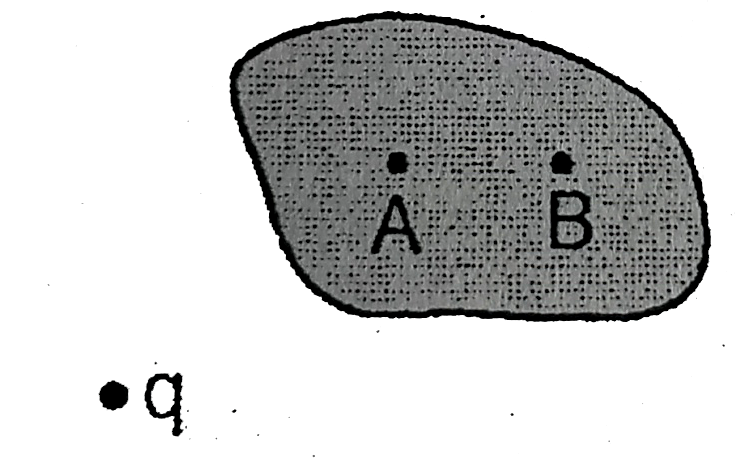
Reason:- The electric field inside a solid conductor is zero under electrostatic conditions.
View SolutionStatement 1: The circuits containing capacitor be handled cautiously even when there is no current. Statement 2: A charged capacitor, can discharge through our body and harm us.
View Solution
Exercise questions and complete solutions for chapter PART TEST 5 of RESONANCE ENGLISH of Class 11